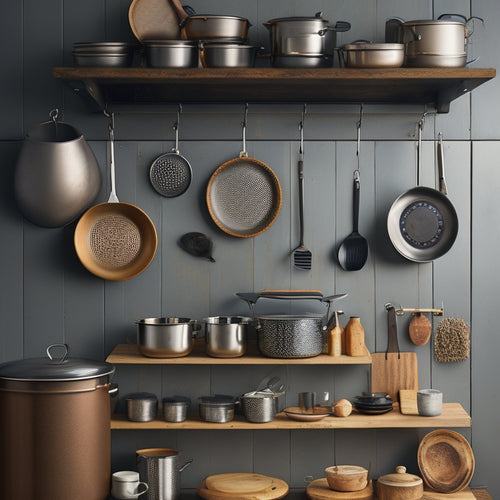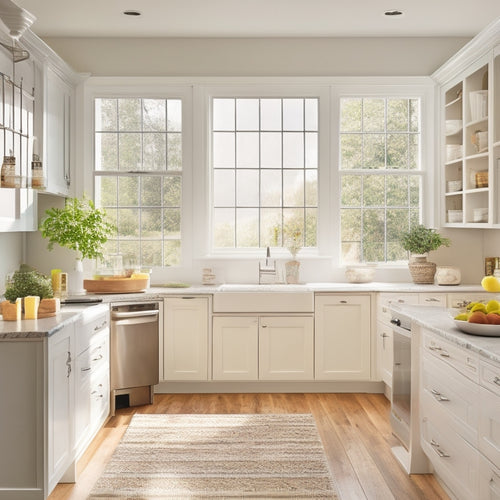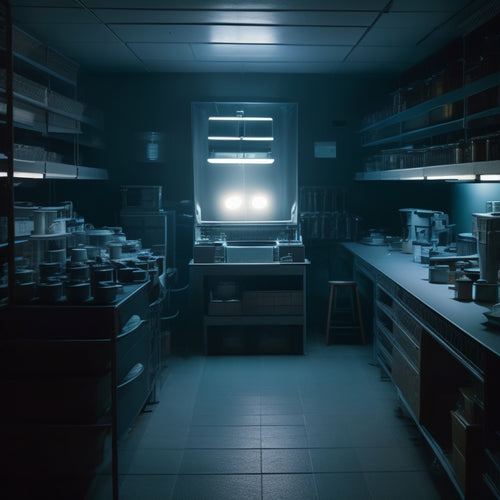
Unlocking Architectural Creativity: Design Workshops Insights
Share
As I delve into unleashing architectural creativity, I'm reminded that it's not just about aesthetics, but about crafting functional, sustainable, and user-centric spaces. In design workshops, I've found that sparking innovation comes from embracing iteration, fostering experimentation, and shifting to a design thinking mindset. Strategies for creative growth include venturing out of my comfort zone and exploring unconventional inspiration sources. By leveraging digital tools, collaborative approaches, and fundamental design principles, I can distill complex problems into elegant solutions. Now, I'm excited to share the insights I've gained and explore how to further push the boundaries of sustainable design and creative potential.
Key Takeaways
• Embrace a culture of experimentation and feedback to foster innovative design thinking and unlock architectural creativity.
• Utilize diverse perspectives and collaborative approaches to harness collective creativity and exceptional designs.
• Leverage digital tools to streamline workflows, enhance precision, and discover new creative possibilities in design.
• Prioritize conceptual thinking and simplicity to distill complex problems into elegant, sustainable, and environmentally responsible solutions.
• Engage in iterative design refinement and co-creation workshops to foster ownership among stakeholders and unlock remarkable spaces.
Sparking Innovation in Design
By embracing the iterative nature of the design process and fostering a culture of experimentation and feedback, architects can spark innovation in their designs.
I've found that a mindset shift towards design thinking allows me to approach problems from unique angles, often leading to groundbreaking solutions.
To fuel this creative process, I draw inspiration from various sources, including architectural books, online resources, and even art museums.
Sketching techniques, such as rapid ideation and freehand drawing, also help me to distill complex ideas into tangible concepts.
Strategies for Creative Growth
I regularly challenge myself to venture out of my comfort zone, exploring unconventional sources of inspiration and embracing novel design tools to stimulate creative growth.
Through creative brainstorming sessions, I bring together diverse perspectives to generate innovative ideas.
I also engage in design exploration, experimenting with different materials, textures, and forms to push the boundaries of architectural design.
By doing so, I'm able to stay curious and open to new possibilities, which is essential for creative growth.
Designing With Digital Tools
Leveraging digital tools, I dive headfirst into the design process, harnessing the power of technology to streamline workflows, enhance precision, and discover new creative possibilities.
I utilize digital modeling techniques to bring my designs to life, allowing me to visualize and refine my concepts with ease. By integrating various software, I can smoothly shift between different stages of the design evolution, ensuring a cohesive and well-thought-out final product.
This fusion of technology and creativity enables me to explore innovative solutions, collaborate with others in real-time, and make data-driven decisions that prioritize safety and efficiency.
As I navigate the design process, I'm constantly seeking ways to optimize my workflow, ensuring that my digital tools are working in harmony to unleash my full creative potential.
Fundamentals of Design Excellence
Three core principles - simplicity, clarity, and elegance - serve as the foundation upon which exceptional design is built, guiding my pursuit of excellence in every project. As I aim for design excellence, I prioritize conceptual thinking, which allows me to explore innovative ideas and solutions. This mindset enables me to distill complex problems into simple, yet elegant solutions. Through design exploration, I uncover unique opportunities to create remarkable spaces that surpass client expectations.
** Embracing iterative design refinement to guarantee precision and accuracy
**Fostering a culture of experimentation and calculated risk-taking
-
Cultivating a deep understanding of the project's context and requirements
-
Pushing the boundaries of sustainable design and environmental responsibility
-
Encouraging open communication and collaboration with clients and stakeholders
Collaborative Design Approaches
By embracing iterative design refinement, I've come to realize that collaborative approaches are vital in harnessing diverse perspectives to create truly exceptional designs.
Through team brainstorming and design charrettes, I've seen how collective creativity can lead to innovative solutions that might've been overlooked by individual efforts.
Co-creation and interactive workshops have also proven to be effective in fostering a sense of ownership and responsibility among stakeholders, ensuring that everyone is invested in the project's success.
Frequently Asked Questions
How Do Architects Balance Aesthetics With Functional Requirements in Design?
I've found that 80% of clients prioritize functionality over aesthetics, yet, as architects, we must balance both. I navigate design dilemmas by embracing creative constraints, sparking innovative solutions that meet functional needs while engaging the senses.
What Role Does Sustainability Play in Modern Architectural Design?
As I design, I prioritize sustainability by incorporating green buildings and eco-friendly materials, ensuring a harmonious balance between aesthetics and functionality while minimizing environmental footprint, creating safe and healthy spaces for occupants.
Can Design Software Replace Traditional Drafting and Drawing Skills?
As I weigh the role of design software, I believe it can augment, not replace, traditional drafting and drawing skills. Digital drawing tools and virtual reality can enhance creativity, but human intuition and precision are still essential for innovative, safe, and functional designs.
How Do Architects Handle Conflicting Feedback From Clients and Stakeholders?
When handling conflicting feedback, I employ effective communication strategies, actively listening to clients and stakeholders, and utilize conflict resolution techniques, such as identifying common goals and prioritizing needs, to navigate disagreements and find mutually beneficial solutions.
What Are the Essential Skills for an Architect to Thrive in a Collaborative Team?
As I navigate collaborative teams, I believe essential skills include effective communication, creative problem-solving, and adaptability, enabling me to distill client needs, facilitate consensus, and drive innovative solutions that guarantee safety and exceed expectations.
Related Posts
-

7 Essential Tips for Pot and Pan Storage
You're tired of digging through a cluttered kitchen for the right pot or pan, and frustrated with the scratches and d...
-

Corner Kitchen Storage Solutions to Boost Efficiency
To boost efficiency in your kitchen, you'll want to strategically utilize corner storage solutions. Start by measurin...
-

Mastering the Art of Darkroom Photography
You're about to enter a precise, hands-on world where you'll enhance your photographic vision into museum-quality pri...


